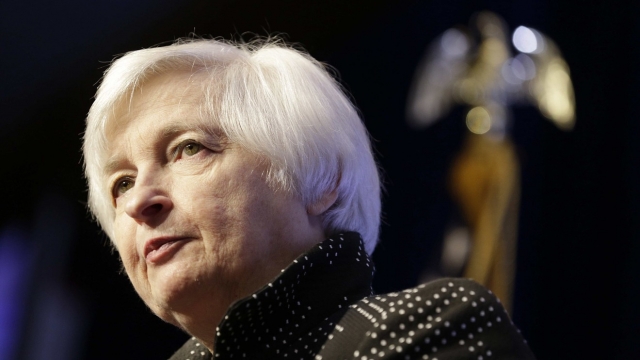
Caroline Baum: Fed flunks econ 101: understanding inflation
http://ift.tt/2giXPpJ
Recent headlines:
“Fed has no reliable theory of inflation, says Tarullo” – Financial Times, Oct. 4, 2017
“Fed Still Puzzled by Inflation, but Rate Increase is on Track” – New York Times, Oct. 11, 2017
“Our understanding of the forces driving inflation is imperfect.” – Janet Yellen, Sept. 26, 2017
And this is from the folks in charge!
The Federal Reserve’s illusive quest to achieve 2% inflation over the medium term is becoming a long-term problem. The institutional anxiety over the chronic inflation undershoot is evident in daily news stories, Fed speeches and the increased focus in internal discussions, as reflected in the minutes of the Sept. 19-20 meeting of the Federal Open Market Committee (FOMC).
One doesn’t have to read between the lines to appreciate the degree to which policy makers fear the onset of the next recession without adequate “room” to lower interest rates. Hence, normalizing interest rates is “on track,” as the headline above noted, even though the relationship — between unemployment and inflation — is decidedly off track.
So what gives? The persistence of sub-2% inflation in the face of nine years of near-zero interest rates and an economy at what is perceived to be full employment has led to an array of silly explanations, embarrassing excuses and a host of pseudo-theories. Just maybe the Fed’s internal guidance system is flawed.
The inverse correlation between unemployment and wages in the U.K. from 1861 to 1957 initially observed by New Zealand economist A.W. Phillips has morphed into a model of causation for Fed chief Janet Yellen and the current crop of U.S. policy makers.
It’s not clear why. Just eyeballing the graph of the Fed’s preferred inflation measure and the civilian unemployment rate, one might conclude that the relationship broke down in the 1970s and has yet to reassert itself. Is a half-century malfunction enough to declare a theory null and void?
One would think so. Yet the notion of cost-push inflation as (supposedly) expressed by Phillips Curve lives, although faith in it has started to wane, even among ardent devotees like labor-economist Yellen.
Instead, we are confronted with headlines such as, “Nobody seems to know why there is no inflation.” Really? Have they all forgotten Milton Friedman’s axiom that inflation is always and everywhere a monetary phenomenon? When the central bank creates more money than the public wants to hold, people spend it. The increased demand for goods and services eventually exceeds the economy’s ability to produce or provide them. The result is higher economy-wide prices, or inflation.
Inflation should have risen as the Fed poured money into the economy, but the problem was that no one was spending the money.
That isn’t happening, not just in the U.S. but across the globe. For all the sturm und drang about the Fed debasing the dollar and sowing the seeds of the next great inflation, the public’s demand for money has increased. The increased desire to hold cash and checkable deposits has risen to meet the increased supply. Velocity, or the rate at which money turns over, has plummeted.
The Fed has two choices. It can adopt the Dr. Strangelove approach and learn to stop worrying and live with low inflation and low unemployment. Or it can do something about it, which runs counter to its stated intention to raise the funds rate and reduce the size of its balance sheet.
Option #1 involves learning to live with a low, stable inflation rate about 0.5 percentage point below the Fed’s explicit 2% target.
Not only has the Fed has achieved price stability in objective terms, but it has also fulfilled former Fed Chairman Alan Greenspan’s subjective definition of price stability: a rate of inflation low enough that it is not a factor in business or household decision-making.
Option #2 means taking some additional actions to increase the money supply by lowering interest rates or resuming bond purchases. The Fed is taking the opposite approach. It began its balance sheet normalization this month, allowing $10 billion of securities to mature each month and gradually increasing the amount every quarter. And it has guided markets to expect another 25-basis-point rate increase in December.
Just to recap: The Fed’s Phillips Curve model is not working. Policy makers do not understand the inflation process. Yet they plan to proceed with a program that, all things equal, will take them farther from their goal of 2% inflation.
Yes, Friedman also talked about the “long and variable lags” with which monetary policy operates, but the Fed’s excuses about the idiosyncratic factors depressing inflation or the transitory nature of the undershoot — five years and counting — are wearing thin.
One of the newer, more laughable explanations for persistently low inflation is that inflation expectations have slipped. The Fed might want to consult the history books to learn how the German Reichsbank accomplished it in the 1920s, the public’s expectations notwithstanding.
And while we’re on the subject of expectations, what are we supposed to think when central bankers admit they have no clue about inflation dynamics?
The only expectation I have, quite frankly, is that maybe these folks will find a more suitable line of work.
business
via MarketWatch.com – Top Stories http://ift.tt/dPxWU8
